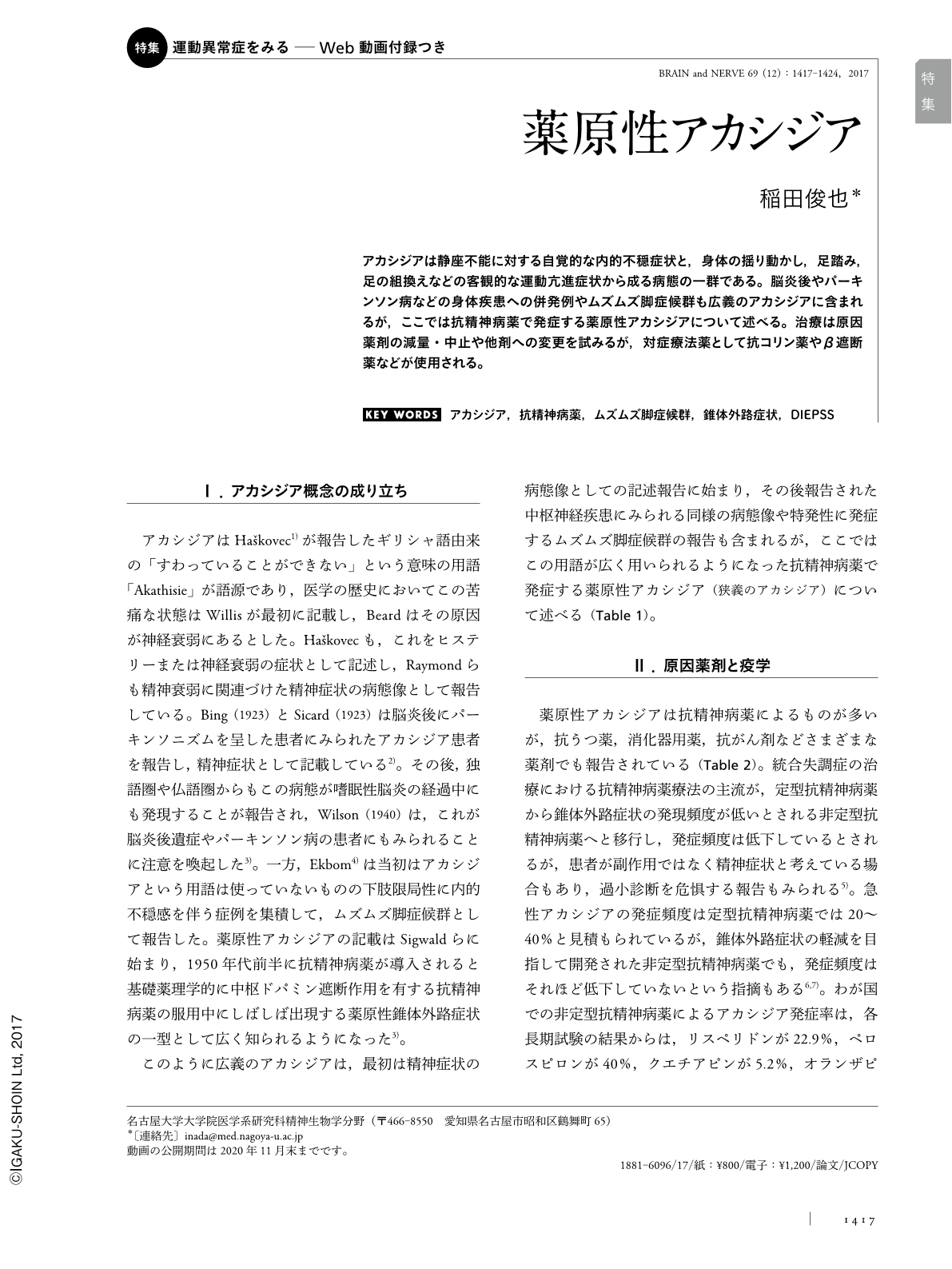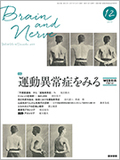Japanese
English
- 有料閲覧
- Abstract 文献概要
- 1ページ目 Look Inside
- 参考文献 Reference
アカシジアは静座不能に対する自覚的な内的不穏症状と,身体の揺り動かし,足踏み,足の組換えなどの客観的な運動亢進症状から成る病態の一群である。脳炎後やパーキンソン病などの身体疾患への併発例やムズムズ脚症候群も広義のアカシジアに含まれるが,ここでは抗精神病薬で発症する薬原性アカシジアについて述べる。治療は原因薬剤の減量・中止や他剤への変更を試みるが,対症療法薬として抗コリン薬やβ遮断薬などが使用される。
*本論文中に掲載されている二次元コード部分をクリックすると,付録動画を視聴することができます(公開期間:2020年11月末まで)。
Abstract
Akathisia consists of subjective inner restlessness, such as awareness of the inability to remain seated, restless legs, fidgetiness, and the desire to move constantly, and of objective increased motor phenomena, such as body rocking, shifting from foot to foot, stamping in place, crossing and uncrossing legs, pacing around. Although the broad definition of akathisia includes the inner and motor restlessness observed in patients with idiopathic Parkinson's disease, post-encephalitic parkinsonism, and restless legs syndrome, here we exclusively focus on the narrow definition of antipsychotic-induced akathisia. The most reliable treatment for acute akathisia is the reduction or the withdrawal of antipsychotic medication. However, this is often not possible because it may worsen the patients' mental condition. Various pharmacological agents have been used for the treatment of this condition. These include anticholinergic agents (e.g., biperiden and trihexyphenidyl), benzodiazepines, beta-adrenoceptor blockers (e.g., propranolol), and serotonin 2A receptor antagonists (e.g., mianserin, cyproheptadine, and mirtazapine).

Copyright © 2017, Igaku-Shoin Ltd. All rights reserved.


